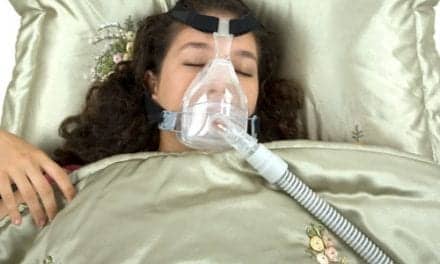Incannex Healthcare Ltd, a clinical-stage pharmaceutical company developing medicinal cannabinoid pharmaceutical products and psychedelic medicine therapies, has completed analysis of data from the phase 2 proof-of-concept clinical trial investigating IHL-42X for treatment of obstructive sleep apnea (OSA). IHL-42X reduced apnea-hypopnea index (AHI), improved patient reported sleep quality, and was well tolerated.
The clinical trial assessed three doses of IHL-42X at reducing the AHI in patients with OSA. Data was also collected for other aspects of sleep quality, tetrahydrocannabinol (THC) clearance, and safety. Trial participants received each of the three doses of IHL-42X and placebo across four seven-day treatment periods, separated by one week washout periods. At the end of each treatment period, they attended the clinic for an overnight sleep study where AHI was determined, along with other measures of sleep quality, quality of life, and drug safety.
The study was conducted at the University of Western Australia Centre for Sleep Science and The Alfred Hospital. A total of eleven participants were recruited to the study and ten participants completed treatment periods. The crossover design meant each participant served as their own internal control and inter-participant variation was eliminated. Data analysis was completed by Novotech, the contract research organization responsible for management of the study, as well as the Incannex scientific research team, led by chief scientific officer Mark Bleackley, PhD.
Effect of IHL-42X on AHI
AHI data was collected during overnight polysomnography on night seven of the treatment periods.
- All doses of IHL-42X reduced AHI in patients with sleep apnea compared to baseline. This reduction was substantially greater than observed for placebo.
- At the group level the difference relative to baseline with low dose and medium dose was statistically significant (p<0.05)
- When comparing directly to baseline within subjects the difference in AHI compared to baseline between all three doses and placebo was statistically significant (p<0.001).
- Low dose IHL-42X reduced AHI by >50% relative to baseline in 62.5% of subjects and by >80% in 25% of subjects.
- Low dose IHL-42X reduced AHI to the greatest extent at both the group level and when comparing the within subject reduction relative to baseline
- Low dose IHL-42X reduced AHI to a greater extent than predicted based on published data for dronabinol and acetazolamide alone.
The reduction in AHI observed during IHL-42X treatment periods means that when treated with Incannex’s proprietary drug, subject’s breathing was interrupted less frequently during sleep. This supports Incannex’s hypothesis that IHL-42X is an effective treatment for OSA. The observation that low dose IHL-42X was the most effective at reducing AHI is encouraging for the development of IHL-42X as a pharmaceutical as a lower dose will reduce risk of side effects and the cost of goods.
Furthermore, greater reduction in AHI with low dose IHL-42X compared to dronabinol and acetazolamide at equivalent doses supports Incannex’s hypothesis that the two drugs are acting synergistically to reduce AHI and provides confidence that IHL-42X will meet the Food and Drug Administration’s combination rule where both active pharmaceutical ingredients must contribute to the therapeutic effect of a fixed dose combination product.
Effect of IHL-42X on Oxygen Desaturation Index
Reduced oxygen uptake is a key component of the pathology of OSA and contributes to daytime sleepiness and the long-term health consequences associated with OSA. Oxygen desaturation index (ODI) data was collected during overnight polysomnography on night seven of the treatment periods.
- All three doses of IHL-42X reduced ODI compared to baseline to a greater extent than placebo.
- For low and medium dose IHL-42X the difference in reduction in ODI relative to baseline compared to placebo was statistically significant (p<0.05)
The greater reduction in ODI during IHL-42X treatment periods compared to placebo means that there is more oxygen in the subject’s blood during sleep while taking IHL-42X. This improves sleep quality and reduces risks of oxidative stress, bursts of the stress hormone cortisol, insulin resistance, altered metabolism, and cardiovascular disease.
Plasma THC Levels the Morning After IHL-42X Dosing
Countries that have set limits for THC above which driving is illegal have set those limits at 1-2 ng/mL. It is important to understand the clearance of THC after dosing with IHL-42X to determine where there will be an impact on ability to drive in countries where THC limits are in place. Plasma samples were collected 2 hours post dose 1 and the morning after dose 7 for each treatment period. Samples were analyzed for concentration of THC using liquid chromatography with tandem mass spectrometry.
The morning after dose 7, THC levels in the low dose IHL-42X samples had an average of 0.20 ng/mL and a maximum of 0.45 ng/mL. Both of which are below the thresholds for impaired driving. With medium and high dose IHL-42X the average THC concentrations the morning after dose 7 were 0.86 and 0.52 respectively.
Effect of IHL-42X on Patient Reported Sleep Quality
Each morning of the clinical trial, subjects recorded their sleep quality for the previous night as very poor, poor, fair, good, or very good. To compare patient reported sleep quality, the proportion of subjects who reported good or very good sleep each night was averaged across each treatment period. During the IHL-42X treatment periods subjects more frequently reported that their sleep quality was good or very good than placebo. The highest level of patient reported sleep quality was observed with low and high dose IHL-42X.
Sleep Metrics Captured by Actigraphy
For the duration of the clinical trial, subjects wore an Actiwatch, a watch-like device that uses actigraphy to capture data on activity and sleep. IHL-42X at all doses improved sleep efficiency (what percentage of time in bed a subject is asleep), the number of awakenings per night, and the total minutes the subject was awake during the night (WASO) compared to placebo. These improvements were greatest for low and high dose IHL-42X. This means that while taking IHL-42X subjects were asleep for a greater proportion of time they were in bed and woke up less often.
Safety Considerations
Adverse events were recorded from the time the subjects enrolled in the trial until their end of study visit. After recording of treatment emergent adverse events (TEAE) the study team, including investigators and medical monitors, reviewed the TEAEs to determine whether they were likely related to the investigational product. The treatment emergent adverse events were consistent with what has been reported for dronabinol and acetazolamide alone. For each treatment period the proportion of subjects reporting one or more TEAEs as well as the total number of TEAEs were extracted from the clinical study report. Low dose IHL-42X had a similar proportion of subjects reporting treatment emergent adverse events and a lower number of total TEAEs than placebo. This indicated that low dose IHL-42X is well tolerated.
Photo 155703115 © Natalia Danko | Dreamstime.com




